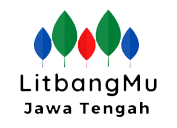Alternatif Remediasi Limbah Cair Industri Keripik Singkong (Manihot utilissima) Menggunakan Tanaman Air dan Tawas
Alternatif Remediasi Limbah Cair Industri Keripik Singkong (Manihot utilissima) Menggunakan Tanaman Air dan Tawas
DOI:
https://doi.org/10.51402/jle.v1i1.12Keywords:
kiambang, liquid waste, remediation, water hyacinthAbstract
In the processing of chips using cassava (Manihot utilissima), it will produce waste in the form of solid and liquid waste. The liquid waste of processing cassava chips contains organic compounds that are easily decomposed and cause unpleasant odors. If the liquid waste is discharged directly into the environment, it will cause pollution and damage the environment. One of the steps that can be used to overcome this problem is phytoremediation. The purpose of this study was to determine the best treatment in the processing of cassava chips industrial wastewater so that the liquid waste is safe to dispose of into the environment. In this study, using two types of aquatic plants, namely water hyacinth (Eichhornia crassipes) and kiambang (Pistia stratiotes) and using alum to remediate liquid waste. This research was conducted experimentally using a jar with a diameter of 15 cm and a height of 25 cm with 3 repetitions of each treatment. The data obtained were analyzed descriptively to determine the best treatment that can be used for remediation of cassava chips industry wastewater. The results showed that the use of water hyacinth plants (Eichhornia crassipes) could improve the quality of wastewater so that it is safe to dispose of into the environment.







